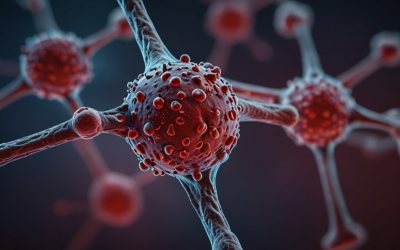As you navigate the ever-evolving landscape of viral infections, think of antiviral drugs as a chessboard where each move counts and the opposing player—the virus—constantly learns from your strategies, adapting and countering in a high-stakes game of survival. You’re tasked with staying one step ahead, understanding that as resistance develops, the arsenal of effective weapons at your disposal diminishes. It’s crucial that you grasp the mechanisms behind viral resistance and the latest advances in combatting this global health challenge. With viruses like HIV, influenza, and the ever-present threat of new emergent strains, the discussion on innovative antiviral methods has never been more pertinent. What you’ll uncover next are the cutting-edge approaches and the brilliant minds behind the science, striving to outpace the viral opponent that refuses to play by the rules.
Key Takeaways
- Viruses develop resistance to antiviral drugs through mutations, making continuous viral replication a risk factor for resistance.
- Drug resistance mutations inform the choice of antiviral treatment, highlighting the importance of understanding the resistance landscape.
- Current antiviral medications like acyclovir, ganciclovir, and valacyclovir are essential in treating herpesvirus infections, but drug resistance compromises their efficacy.
- Novel drug discovery aims to develop treatments that overcome drug resistance by precision targeting of viral proteins and molecular pathways, with collaboration among experts in virology, pharmacology, and medicinal chemistry.
Understanding Viral Resistance

To combat the rise of viral resistance, it’s essential to understand how viruses develop immunity to antiviral drugs, a process often characterized by mutations that render treatments less effective or even obsolete. As you delve into this complex issue, you’ll find that immunocompromised patients are particularly at risk due to continuous viral replication and extended exposure to antiviral agents, which can select for viruses with reduced susceptibility.
Recognizing drug resistance mutations swiftly is crucial, as this knowledge directly informs the choice of antiviral treatment and the adoption of alternative therapies. You’re tasked with not just identifying these mutations but also understanding their mechanisms. Take, for example, oseltamivir resistance in influenza viruses; the H275Y mutation in the viral neuraminidase enzyme is a well-known marker that diminishes the effectiveness of neuraminidase inhibitors, a cornerstone of flu therapy.
In managing antiviral resistance, you must optimize host factors and drug delivery strategies. Furthermore, employing phenotypic and genotypic assays allows for a more nuanced understanding of the resistance landscape. Such specialized testing can pinpoint the precise nature and extent of resistance, guiding your clinical decisions.
Be aware, resistance can result in persistent viremia, exacerbating disease progression despite ongoing therapy. This can lead to severe consequences, including increased toxicity and a narrowing of viable treatment options. Hence, it’s imperative to stay abreast of the specific resistance mechanisms of viruses like Herpes Simplex Virus, Varicella Zoster Virus, and Cytomegalovirus, as each requires a tailored approach to overcome these hurdles and provide effective care to those in need.
Current Antiviral Medications
Understanding viral resistance informs our approach to the use of current antiviral medications, such as acyclovir, ganciclovir, and valacyclovir, which are pivotal in treating herpesvirus infections by inhibiting viral DNA polymerase. These antiviral drugs are essential tools in the battle against viral diseases, but their efficacy can be compromised by the emergence of drug resistance. This resistance occurs when viruses mutate, rendering medications less effective and jeopardizing treatment outcomes.
You’re aware that ganciclovir and its prodrug valganciclovir are FDA-approved for cytomegalovirus (CMV) infections, demonstrating the importance of targeted antiviral therapy. Moreover, foscarnet and cidofovir are alternatives that do not rely on viral enzyme-mediated activation, offering options when resistance to other drugs emerges. When managing drug resistance, it’s critical to consider host factors, ensure proper drug delivery, and choose alternative therapies informed by the mechanisms of resistance.
To combat Antiviral Drug Resistance, genotypic assays are vital. They provide insights into the genetic basis of drug susceptibility, allowing for more informed treatment decisions, especially in patients with known resistance mutations. For instance, acyclovir-resistant herpes simplex virus (HSV) is more commonly found in immunocompromised patients. When resistance is detected, foscarnet or cidofovir can be utilized as second-line agents.
It’s also crucial to mention antiviral drugs for other viruses, such as the hepatitis B virus and influenza viruses. Influenza’s Neuraminidase inhibitors, for example, target viral replication and are closely monitored for antiviral susceptibility. Similarly, reverse transcriptase inhibitors play a significant role in managing hepatitis B, with ongoing surveillance for drug resistance.
Novel Drug Discovery

In the realm of antiviral therapy, novel drug discovery aims to pinpoint and develop new treatments that can outmaneuver the challenge of drug resistance. You’re tasked with the mission to forge paths beyond the current antiviral drugs used, which increasingly face the obstacle of resistant strains. Your scientific acumen is vital in understanding the susceptibility of viral pathogens to existing medications and the burgeoning issue of drug resistance among these infectious agents.
Your approach must be multifaceted, targeting specific viral proteins and exploring their molecular pathways. This precision is critical, as the genetic makeup of viruses is prone to mutation, leading to drug resistant viruses that evade conventional antiviral medications. You employ high-throughput screening and computational modeling, techniques quintessential for identifying novel candidates capable of inhibiting viral replication.
In this pursuit, resistance testing becomes a cornerstone of your strategy. This allows you to profile specific antiviral drugs against a spectrum of viral genotypes, ensuring the compounds you develop are effective against the widest range of resistant viruses. Collaboration stands at the forefront of your endeavors—working alongside virologists to understand viral behavior, pharmacologists to assess drug interactions, and medicinal chemists to synthesize and optimize new drug candidates.
You’re not just creating medications; you’re crafting weapons in the fight against an ever-evolving viral foe. Your role is pivotal in ensuring the next generation of antiviral drugs is one step ahead, preserving the health and well-being of populations worldwide. Your dedication to this cause is a testament to a commitment to serve and protect humanity from the threat of viral diseases.
Genetic Editing Techniques
Harnessing genetic editing techniques like CRISPR-Cas9 could revolutionize antiviral therapy by precisely altering viral genomes to thwart their replication. You’re at the forefront of this scientific endeavor, understanding that as viral infections evolve, so too must your methods to combat them. Resistance to antiviral drugs is a rising concern, and genetic editing techniques offer a proactive solution to this challenge.
CRISPR-Cas9’s ability to target specific genes within the viral DNA presents a novel approach to rendering viruses antiviral resistant. By inducing mutations in the viral genome that are detrimental to the virus but harmless to the host, you can potentially curb the spread of viral infections. This precision allows for the alteration of wild type viral strains into attenuated or non-infectious forms, thus reducing their ability to cause disease.
As you delve into the development of these techniques, you’ll employ phenotypic assays to evaluate the effectiveness of the genetic alterations. By comparing treated viruses to their wild type counterparts, you can determine their susceptibility to drugs and the potential emergence of resistance.
RNA interference (RNAi) is another genetic editing tool at your disposal. It suppresses viral gene expression, thereby inhibiting replication. Clinical trials are crucial in validating the safety and efficacy of these methods. Through rigorous testing, you may identify nucleoside and nucleotide analogs which, when combined with genetic editing techniques, enhance the antiviral effect.
Your work with genetic editing techniques is not just about combating viral infections—it’s about safeguarding the health of communities worldwide. By modifying the very genetic fabric of viruses, you’re contributing to a future where antiviral resistance is a challenge of the past.
Immunotherapy Innovations

While genetic editing techniques like CRISPR-Cas9 offer one avenue for combatting viral infections, immunotherapy innovations present another, leveraging the body’s own immune system to target and destroy viral pathogens. These advancements are particularly crucial when you consider the challenges posed by viruses that are resistant to existing antiviral agents or in patients who are immunocompromised.
Immunotherapy innovations, such as chimeric antigen receptor (CAR) T-cell therapy, have shown promise in the treatment of hepatitis B and immunodeficiency virus, where specific antivirals may be insufficient. These therapies reprogram the patient’s T-cells to specifically target and eliminate virus-infected cells. Meanwhile, immune checkpoint inhibitors release the brakes on the immune system, empowering it to attack viral infections more effectively.
The development of personalized cancer vaccines is a testament to the precision of these approaches. By tailoring the vaccine to an individual’s unique tumor antigens, it’s possible to elicit a robust immune response against cancer cells harboring viral DNA, thus helping to inhibit viral growth indirectly. Oncolytic viruses, another breakthrough, selectively infect and lyse cancer cells, which may be harboring resistant viral strains.
Monoclonal antibody therapy is being refined to neutralize viruses directly, while immune modulators are being explored to boost the body’s antiviral response. These strategies can be particularly beneficial for patients facing resistance in clinical settings due to the limited use of antiviral options.
Preventative Strategies
To effectively mitigate the spread and impact of viral infections, it’s essential to prioritize preventative strategies that include prompt diagnosis and rigorous infection control measures. As someone committed to serving others, you understand that early detection of viral infections is paramount. This not only ensures timely initiation of therapy but also curtails unnecessary drug use, which can prevent the emergence of resistance. Moreover, strict adherence to recommended treatment regimens is a cornerstone in the prevention and treatment of viral diseases.
You must also recognize the importance of vaccination as a primary tool in infection control. By reducing the incidence of viral infections, you help diminish the overall reliance on antiviral drugs, thereby lowering the risk for developing antiviral resistance. It’s crucial that you stay informed about the latest antiviral agents for the treatment of various infections, as this knowledge aids in selecting the most appropriate therapy, should treatment become necessary.
For a clearer understanding, consider the following table summarizing key preventative strategies:
| Strategy | Benefit |
|---|---|
| Accurate and Prompt Diagnosis | Reduces unnecessary antiviral use and risk of resistance |
| Infection Control Measures | Minimizes viral spread and lowers antiviral therapy dependence |
| Education on Treatment Adherence | Prevents emergence of drug-resistant strains |
Lastly, vigilance in monitoring antiviral susceptibility patterns provides valuable insight into the effectiveness of current drugs and signals when the development of new treatment options is imperative. Through such scientific analysis and precise application of knowledge, you play a vital role in safeguarding public health against the challenges posed by viral resistance.











